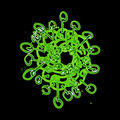Template:Selected anniversaries/April 9: Difference between revisions
No edit summary |
No edit summary |
||
| Line 7: | Line 7: | ||
||1754: Christian Wolff dies ... philosopher. Wolff was the most eminent German philosopher between Leibniz and Kant. His main achievement was a complete oeuvre on almost every scholarly subject of his time, displayed and unfolded according to his demonstrative-deductive, mathematical method. Pic. | ||1754: Christian Wolff dies ... philosopher. Wolff was the most eminent German philosopher between Leibniz and Kant. His main achievement was a complete oeuvre on almost every scholarly subject of his time, displayed and unfolded according to his demonstrative-deductive, mathematical method. Pic. | ||
File:Thomas Seebeck.jpg|link=Thomas Johann Seebeck (nonfiction)|1770: Physicist and academic [[Thomas Johann Seebeck (nonfiction)|Thomas Johann Seebeck]] born. | File:Thomas Seebeck.jpg|link=Thomas Johann Seebeck (nonfiction)|1770: Physicist and academic [[Thomas Johann Seebeck (nonfiction)|Thomas Johann Seebeck]] born. Seebeck will discover the thermoelectric effect. | ||
||1791: George Peacock born ... mathematician. Pic. | ||1791: George Peacock born ... mathematician. Pic. | ||
| Line 25: | Line 25: | ||
File:Wilhelm Röntgen.jpg|link=Wilhelm Röntgen (nonfiction)|1864: Engineer and physicist [[Wilhelm Röntgen (nonfiction)|Wilhelm Röntgen]] uses X-rays generator to expose [[Loaded dice (nonfiction)|loaded dice]], reveals organized [[math crime]] cartel in casinos around the world. | File:Wilhelm Röntgen.jpg|link=Wilhelm Röntgen (nonfiction)|1864: Engineer and physicist [[Wilhelm Röntgen (nonfiction)|Wilhelm Röntgen]] uses X-rays generator to expose [[Loaded dice (nonfiction)|loaded dice]], reveals organized [[math crime]] cartel in casinos around the world. | ||
File:Charles Proteus Steinmetz.jpg|link=Charles Proteus Steinmetz (nonfiction)|1865: Mathematician and electrical engineer [[Charles Proteus Steinmetz (nonfiction)|Charles Proteus Steinmetz]] born. | File:Charles Proteus Steinmetz.jpg|link=Charles Proteus Steinmetz (nonfiction)|1865: Mathematician and electrical engineer [[Charles Proteus Steinmetz (nonfiction)|Charles Proteus Steinmetz]] born. Steinmetz will foster the development of alternating current, formulating mathematical theories which will advance the expansion of the electric power industry in the United States. | ||
||1866: André-Michel Guerry dies ... lawyer and amateur statistician. Together with Adolphe Quetelet he may be regarded as the founder of moral statistics which led to the development of criminology, sociology and ultimately, modern social science. Pic: map. | ||1866: André-Michel Guerry dies ... lawyer and amateur statistician. Together with Adolphe Quetelet he may be regarded as the founder of moral statistics which led to the development of criminology, sociology and ultimately, modern social science. Pic: map. | ||
| Line 79: | Line 79: | ||
File:Skip Digits.jpg|link=Skip Digits|1978: Musician and alleged math criminal [[Skip Digits]] performs at the Kennedy Center for the Arts. | File:Skip Digits.jpg|link=Skip Digits|1978: Musician and alleged math criminal [[Skip Digits]] performs at the Kennedy Center for the Arts. | ||
||1981: The U.S. Navy nuclear submarine USS George Washington accidentally collides with the Nissho Maru, a Japanese cargo ship, sinking it. | ||1981: The U.S. Navy nuclear submarine USS ''George Washington'' accidentally collides with the ''Nissho Maru'', a Japanese cargo ship, sinking it. | ||
||1982: Robert Havemann dies ... chemist, and an East German dissident. Pic. | ||1982: Robert Havemann dies ... chemist, and an East German dissident. Pic. | ||
| Line 85: | Line 85: | ||
||1982: Maximilian Herzberger dies ... mathematician and physicist, known for his development of the superachromat lens. Pic. | ||1982: Maximilian Herzberger dies ... mathematician and physicist, known for his development of the superachromat lens. Pic. | ||
||1983: Yozo Matsushima dies ... mathematician. Pic search | ||1983: Yozo Matsushima dies ... mathematician. Pic search. | ||
||2002: Leopold Vietoris dies ... soldier, mathematician, and academic. Pic. | ||2002: Leopold Vietoris dies ... soldier, mathematician, and academic. Pic. | ||
||2003: Jerry Bittle dies ... cartoonist. Pic search | ||2003: Jerry Bittle dies ... cartoonist. Pic search. | ||
||2007: Dorrit Hoffleit dies ... astronomer and academic. Pic. | ||2007: Dorrit Hoffleit dies ... astronomer and academic. Pic. | ||
| Line 97: | Line 97: | ||
||2015: Alexander Dalgarno dies ... physicist and academic. Pic. | ||2015: Alexander Dalgarno dies ... physicist and academic. Pic. | ||
||2016: Duane Clarridge dies ... spy. Pic search | ||2016: Duane Clarridge dies ... spy. Pic search. | ||
File:Green Tangle.jpg|link=Green Tangle (nonfiction)|2018: ''[[Green Tangle (nonfiction)|Green Tangle]]'' voted Picture of the Day by the citizens of [[New Minneapolis, Canada]]. | File:Green Tangle.jpg|link=Green Tangle (nonfiction)|2018: ''[[Green Tangle (nonfiction)|Green Tangle]]'' voted Picture of the Day by the citizens of [[New Minneapolis, Canada]]. | ||
</gallery> | </gallery> | ||
Revision as of 04:50, 9 April 2020
1770: Physicist and academic Thomas Johann Seebeck born. Seebeck will discover the thermoelectric effect.
1805: Mathematician and crime-fighter Joseph-Louis Lagrange delivers lecture on applications of number theory to the detection and prevention of crimes against mathematical constants.
1860: On his phonautograph machine, Édouard-Léon Scott de Martinville makes the oldest known recording of an audible human voice. A visual recording of audio data, it will first be played back in 2008.
1864: Engineer and physicist Wilhelm Röntgen uses X-rays generator to expose loaded dice, reveals organized math crime cartel in casinos around the world.
1865: Mathematician and electrical engineer Charles Proteus Steinmetz born. Steinmetz will foster the development of alternating current, formulating mathematical theories which will advance the expansion of the electric power industry in the United States.
1917: Mathematician and philosopher Georg Cantor publishes new theory of sets derived from Gnomon algorithm functions. Colleagues hail it as "a magisterial contribution to science and art of detecting and preventing crimes against mathematical constants."
1978: Musician and alleged math criminal Skip Digits performs at the Kennedy Center for the Arts.
2018: Green Tangle voted Picture of the Day by the citizens of New Minneapolis, Canada.







